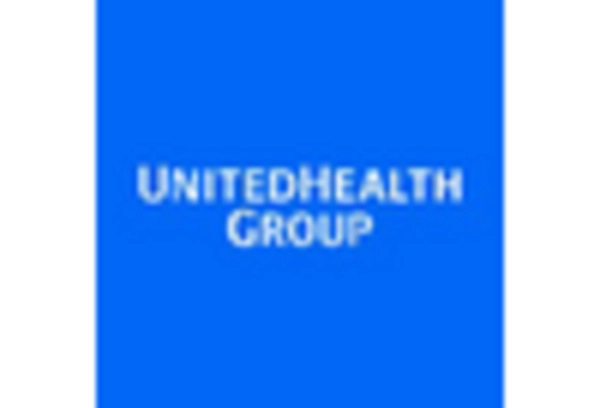Shift Towards Value-Based Care Models
The Patient-Centered Medical Home Service Market is significantly influenced by the transition from fee-for-service to value-based care models. This shift emphasizes the quality of care over the quantity of services provided, aligning financial incentives with patient outcomes. As healthcare systems increasingly adopt value-based care, the demand for patient-centered medical homes is expected to rise. Reports indicate that organizations implementing these models have seen a reduction in hospital readmissions by up to 30%. Consequently, this trend is likely to drive growth within the Patient-Centered Medical Home Service Market, as providers seek to enhance care coordination and improve patient health.
Rising Demand for Personalized Healthcare
The Patient-Centered Medical Home Service Market is experiencing a notable increase in demand for personalized healthcare solutions. Patients are increasingly seeking tailored treatment plans that cater to their unique health needs. This shift is driven by a growing awareness of the importance of individualized care, which is believed to enhance patient satisfaction and health outcomes. According to recent data, approximately 70% of patients express a preference for personalized healthcare services. This trend is likely to propel the Patient-Centered Medical Home Service Market forward, as healthcare providers adapt their offerings to meet these evolving expectations.
Increased Focus on Chronic Disease Management
The Patient-Centered Medical Home Service Market is witnessing a heightened emphasis on chronic disease management. With the prevalence of chronic conditions such as diabetes and hypertension on the rise, healthcare systems are prioritizing comprehensive care strategies. Patient-centered medical homes are well-positioned to address these challenges by offering coordinated care that focuses on prevention and management. Data suggests that patients enrolled in these programs experience better health outcomes and lower healthcare costs. This focus on chronic disease management is likely to be a key driver for the Patient-Centered Medical Home Service Market, as it aligns with the broader goals of improving population health.
Technological Advancements in Healthcare Delivery
The Patient-Centered Medical Home Service Market is being transformed by rapid technological advancements. Innovations such as telemedicine, electronic health records, and mobile health applications are enhancing the delivery of patient-centered care. These technologies facilitate better communication between patients and providers, streamline care coordination, and improve access to healthcare services. Recent statistics indicate that telehealth usage has surged, with a 50% increase in virtual visits reported in the past year. As these technologies become more integrated into healthcare practices, they are expected to drive the growth of the Patient-Centered Medical Home Service Market, enabling more efficient and effective care.
Regulatory Support for Patient-Centered Care Models
The Patient-Centered Medical Home Service Market is benefiting from increasing regulatory support for patient-centered care models. Policymakers are recognizing the value of these models in improving healthcare quality and reducing costs. Initiatives such as the Patient-Centered Medical Home Recognition Program are encouraging healthcare providers to adopt these practices. Furthermore, government incentives for implementing patient-centered medical homes are becoming more prevalent, which may lead to increased adoption rates. As regulatory frameworks continue to evolve in favor of patient-centered care, the Patient-Centered Medical Home Service Market is likely to experience substantial growth, driven by enhanced support and funding.


















Leave a Comment